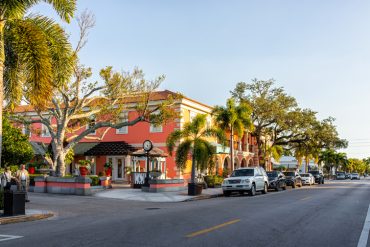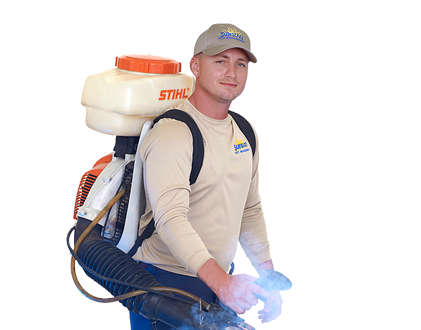

Some people say that small businesses are the life blood of a community. They are owned and operated by your neighbors and the money they generate all stays local. Unlike department or chain stores which syphon the money back to a home office or headquarters in another state (or country), local small businesses are solely dependent on local business to survive.
Whether we are talking about our very own pest control company in Rockledge, a tanning salon in Buffalo New York, or an attorney who handles child support in Oklahoma, we all have one thing in common – we depend on you as much as you depend on us.
There are roughly 33 million small businesses in the United States. They employ about 62 million Americans. About 7% of adults own or run a small business. However, 99% of businesses are classified as “small” according the government. This is data that can be found at the SBA website. SBA stands for the Small Business Administration. They are the governmental agency whose job it is to facilitate grants, loans and leads to small businesses in the USA.
Small businesses are integral to community economies, acting as significant employers and keeping money circulating locally. When consumers spend at small businesses, a larger portion of that money stays in the community, creating a multiplier effect that boosts local economic activity. They foster innovation by adapting quickly to local needs, enhancing community identity, and attracting tourism. These businesses support local supply chains, engage in civic activities that build social capital, and show remarkable adaptability during economic shifts. This involvement not only sustains but also enriches the economic, social, and cultural life of communities. If you’re interested in seeing how this economic cycle functions, I can generate an image to illustrate the concept.
Starting a small business requires validating your idea by identifying market needs, conducting thorough market research, and assessing feasibility. Next, draft a business plan detailing your executive summary, company description, market analysis, organizational structure, product or service line, marketing and sales strategies, and financial projections. Decide on a legal structure like Sole Proprietorship, LLC, Partnership, or Corporation, considering liability, taxation, and management. Register your business name and secure the necessary licenses and permits, obtaining an EIN if needed.
Calculate startup costs and explore funding options like personal savings, loans, investors, or grants. Open a business bank account to manage your finances separately. Choose a business location, mindful of zoning laws, deciding between physical, online, or both presences. Develop your branding, including a logo and business identity, and ensure you have a professional website. Establish supplier relationships and manage inventory for product-based businesses.
Create a marketing plan incorporating both digital and traditional strategies, leveraging social media for customer engagement. Launch your business with a soft opening to test the market, followed by a grand opening event or promotion. For operations, decide on hiring needs, systematize processes for consistency, and ensure you’re continuously learning and adapting based on customer feedback and industry trends. Review and adjust your business plan and financials regularly to adapt to changes and ensure growth.
The very most important aspects of starting a business is meeting a demand which exists and offering good customer service. I cannot stress these two facets enough.
Sunstate Pest is a small business which began 45 years ago. Even though we have grown over the past 4+ decades, we are still a small business. Serving Rockledge, Brevard County, Kissimmee and St. Cloud is our passion.
Staying up to date on the most modern pest control techniques as well as always improving service by listening to feedback from our customers has helped us sustain our business since 1980.
Pest control involves managing and eliminating unwanted pests like insects, rodents, and others that can harm health, damage property, or disrupt the environment. There are various methods including chemical control, which uses pesticides; biological control, where natural predators manage pest populations; mechanical or physical methods like traps and barriers; and cultural controls that adjust human practices to deter pests. Integrated Pest Management (IPM) combines these methods for a sustainable approach.
The process typically starts with inspection and identification of pests, followed by prevention, treatment, monitoring, and education on pest control practices. It’s important to consider the environmental impact, safety for humans and pets, and compliance with legal regulations when choosing pest control methods.
Modern pest control, as we know it today with a focus on scientific methods, began to take shape in the late 19th and early 20th centuries. The development of synthetic pesticides like DDT in the 1940s marked a significant milestone in pest control, although the use of chemicals for pest control dates back to ancient civilizations. However, the concept of Integrated Pest Management (IPM) which emphasizes a more holistic approach combining biological, cultural, physical, and chemical controls, started gaining prominence in the 1960s and 1970s, particularly after Rachel Carson’s “Silent Spring” highlighted the environmental impact of pesticides.
Modern pest control as we recognize it today began to evolve in the late 19th century with the advent of mechanical spraying machines and chemical insecticides like lead arsenate. However, the real shift came with the introduction of synthetic organic pesticides in the early 20th century, with DDT being a pivotal development in the late 1930s, widely used post-World War II. This era marked a significant change in pest control strategies. After the environmental concerns raised by Rachel Carson’s “Silent Spring” in 1962, there was a shift towards more sustainable methods, leading to the development and promotion of Integrated Pest Management (IPM) in the 1960s and 1970s. IPM focuses on a blend of biological, cultural, mechanical, and chemical controls. More recently, pest control has seen technological advancements with tools like smart traps and drones, alongside ongoing improvements in biological control methods.
Thank you for taking the time to read our blog about our small business and the industry in which we have worked for almost half a century.
